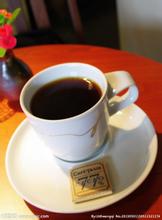Siphon pot and hand coffee maker
The prototype of hand-brewed coffee was invented by an Englishman named BIGGIN, because when coffee was introduced to Britain, the Turkish soaking method was introduced to make coffee, and the British liked coffee but did not like the taste of coffee grounds, so this Mr. BIGGIN invented the prototype of velvet filtered coffee at the end of the 17th century, called BIGGIN, and then in the early 18th century. The French also invented a metal filter, but most people still like to use BIGGIN, so it was not until Europe used industrial methods to brew coffee by machine, this hand-brewed coffee utensils were used and carried forward by the Japanese.
Siphon coffee pot is most common in Taiwan and Japan. It is said that it was first invented by Scottish shipbuilder Robed Napier, and also appeared in Germany in 1830. Finally, it was continuously improved by France and Britain to become the top and bottom of the coffee pot. Under the action of heating and atmospheric pressure, the coffee pot makes the water go up (the air rises), and after the heat is turned off, the coffee is filtered down (the cold air drops) to complete the soaking and filtering of the coffee pot. It tastes so elegant that the producer seems to be a researcher.
Material:
Since the development of hand-made coffee, it has been divided into two groups from the filter materials used. Flannel is used in the old school, but less is used at present. The new school uses disposable filter paper, and the two schools have their own advantages and disadvantages and supporters. Flannel has a worry that it is unhygienic and repetitive, while paper filtration is fast and hygienic, but the Crema in the coffee is sucked away, and the flavor is obviously not as mellow as flannel.

Important Notice :
前街咖啡 FrontStreet Coffee has moved to new addredd:
FrontStreet Coffee Address: 315,Donghua East Road,GuangZhou
Tel:020 38364473
- Prev

Guatemala Vivette South Fruit Coffee producing area
Vivette Nan Fruit is located in the highlands of northwestern Guatemala, growing at an altitude of 1800-2100 meters. It is the highest coffee-producing area in the country and is famous for producing high-quality beans. Because there are many rivers and lakes in Guatemala, the Vivette Nanguo region is rich in mountains and water resources, dry climate but abundant water resources, and complete water conservancy facilities in this area, so coffee is often washed and added.
- Next

Which is better, shallow baking, moderate baking or deep baking?
Fried coffee beans are roasted at high temperatures, or roasted, to create the coffee's unique color (similar to amber, depending on the degree of roasting), flavor and aroma. Frying turns the green (or yellowish) raw coffee beans into the familiar tea-brown coffee beans. High-quality frying refers to the ingenious surface of the aroma, sour and bitter ingredients of raw coffee beans.
Related
- Does Rose Summer choose Blue, Green or Red? Detailed explanation of Rose Summer Coffee plots and Classification in Panamanian Jade Manor
- What is the difference between the origin, producing area, processing plant, cooperative and manor of coffee beans?
- How fine does the espresso powder fit? how to grind the espresso?
- Sca coffee roasting degree color card coffee roasting degree 8 roasting color values what do you mean?
- The practice of lattes: how to make lattes at home
- Introduction to Indonesian Fine Coffee beans-- Java Coffee producing area of Indonesian Arabica Coffee
- How much will the flavor of light and medium roasted rose summer be expressed? What baking level is rose summer suitable for?
- Introduction to the characteristics of washing, sun-drying or wet-planing coffee commonly used in Mantenin, Indonesia
- Price characteristics of Arabica Coffee Bean Starbucks introduction to Manning Coffee Bean Taste producing area Variety Manor
- What is the authentic Yega flavor? What are the flavor characteristics of the really excellent Yejasuffi coffee beans?

